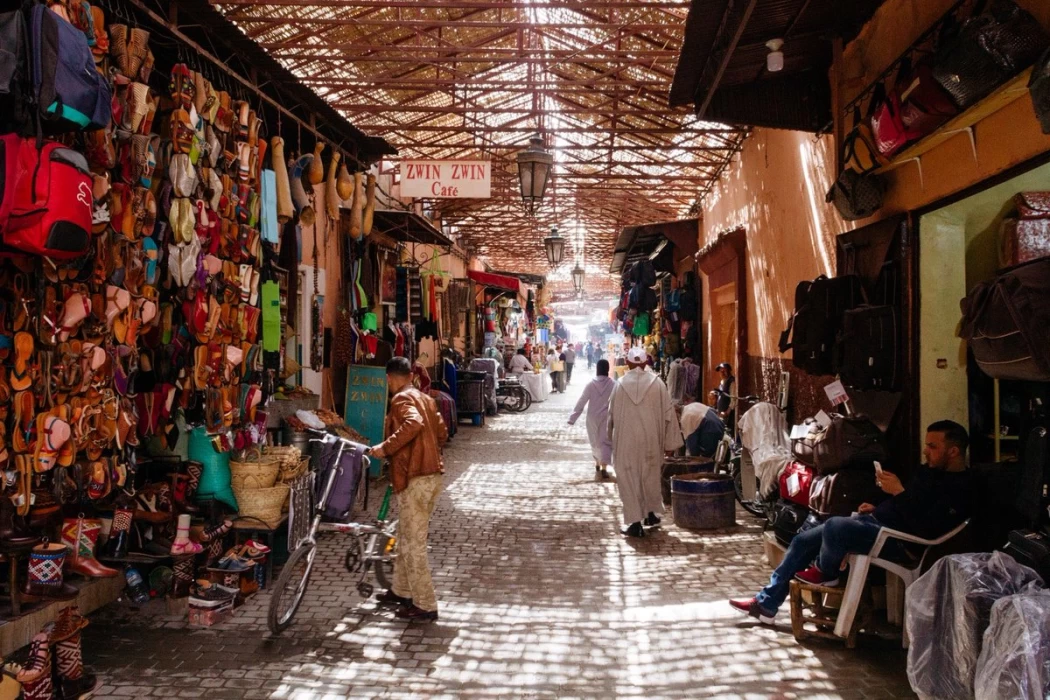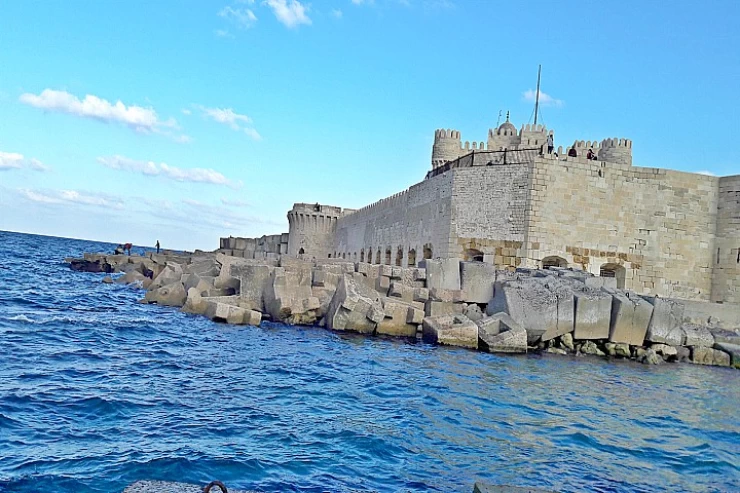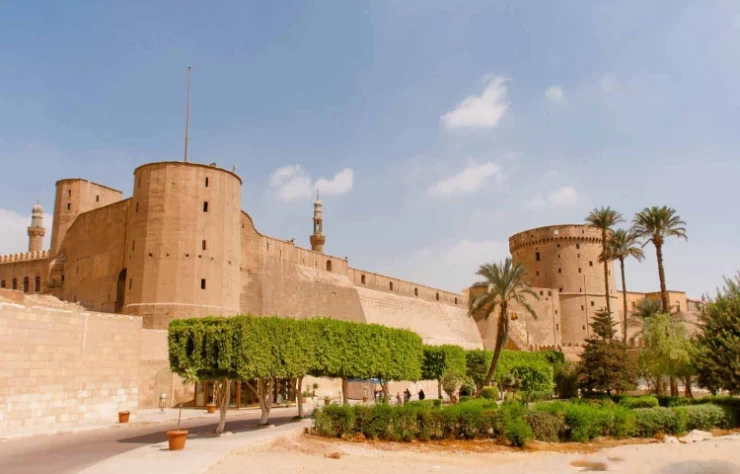
Souk Al Khayamiya | Tentmakers Bazaar
Souk Al Khayamiya | Tentmakers Bazaar
The ancient khayamiya market is located across the street from Bab Zuwayla in Cairo, just steps away from the Under the Quarter area, which is located along Al-Moez Street and at the end of Ghoriya Street.
The name Khayamiya comes from its maker, the khayami, who used to make tents, whether by sewing them or decorating them, and the textile pieces that are woven in certain shapes and sewn with fabrics often express the spirit of the folk artist and his inherited heritage.
Thus, the market was named after the craftsmen who lived in it, who relied on manual methods to make tents and colorful fabrics of all kinds, which still play prominent roles in the life of Egyptian society, where they are used in clothing, bags, funeral and mourning marquees, wedding fabrics, pillows, bedspreads, handmade carpets (kilims), art paintings, shrine coverings, as well as the clothes of dervishes and tanoura dancers.
The tent is one of the first crafts that man learned and practiced from earlier times, especially when he started moving from one place to another, and for this he needed the tent as a place to shelter and protect him from the elements.
The tent in Arab history has many stories, as this craft took its value from the day the Arabs set up tents and took care of their appearance as a dwelling and home, because it was very suitable for the nature of their life, which depended on nomadic travel and movement in search of water and pasture resources.
Each Arab was keen to make his tent different from other tents, through drawings, shapes and woven colors, and for many Arabs, the tent still has its historical flavor.
Over time, the craft of khayamiya evolved from simply making a shelter for humans, as it was initially colored fabrics in one color or a few colors, and then the aesthetic dimension was added to it, and it became dependent on artistic taste more than being a craft, and then began to introduce Arabic drawings, decorations and writings that gave the design a special spirit and taste.
Latest Articles
Admin
Aswan Governerate in Egypt
Aswan was known as ‘Sonu’ in ancient Egyptian times, meaning market, as it was a trading centre for caravans coming to and from Nubia. In the Ptolemaic era, it was called ‘Sin’ and the Nubians called it ‘Yaba Swan’. It was also known as the Land of Gold because it served as a great treasure or tomb for the kings of Nubia who lived there for thousands of years. Before the migration, Aswan's borders extended from Asna in the east to the border of Sudan in the south, and its inhabitants were Nubians, but after the Islamic conquest of Nubia, some Arab tribes settled there.
Admin
About Luxor Governorate in Egypt
The South Upper Egyptian area is home to the Egyptian governorate of Luxor. Its capital is Luxor, which was formerly Thebes, the capital of Egypt throughout multiple pharaonic eras. Its centers and cities are spread over both sides of the Nile River. The said governorate was established by Presidential Decree No. 378 of 2009, which was promulgated on the 9th of December of that year.
Admin
History of kafr El Sheikh Governorate
Kafr El Sheikh Governorate, located in the far north of Egypt in the Nile Delta, overlooking the Mediterranean Sea, is characterised by the diversity of natural life and environments, and is one of the Egyptian cities that can be visited after the end of the first semester exams at universities and schools, as it features many diverse tourist and recreational places at symbolic prices within everyone's reach.
Admin
Egypt's New Administrative Capital
The New Administrative Capital is considered the project of the era because it reflects a perfect image of the future and progress on the economic, cultural, social and civilisational level, as the capital is considered the new capital of Egypt at the present time. The importance of the New Capital is that it is a comprehensive transformation of the future of buildings, services and national and mega projects in Egypt.
Admin
Al Gharbia Governorate
The Governorate of Gharbia is inclusive in the geographical area of The Arab Republic of Egypt which is in the African continent, more specifically in the region surrounding the Nile delta, between Damietta and Rashid governance. To the control of the region from the north is Kafr El-Sheikh Governorate, from the south Menoufia Governorate, from the east – Dakahlia, Qalyubia Governorates, and to the west is the Beheira Governorate.
Admin
Hamata Islands (Qulaan Archipelago) in Marsa Alam
Each reserve has several sectors. In Wadi El Gemal Reserve, there is one of the natural areas called the Hamata area or Hamata sector in Wadi El Gemal Reserve. Its sectors are the perfect and most ecological, land and water, and host countless animals and plants found in the oceans and on the land.















